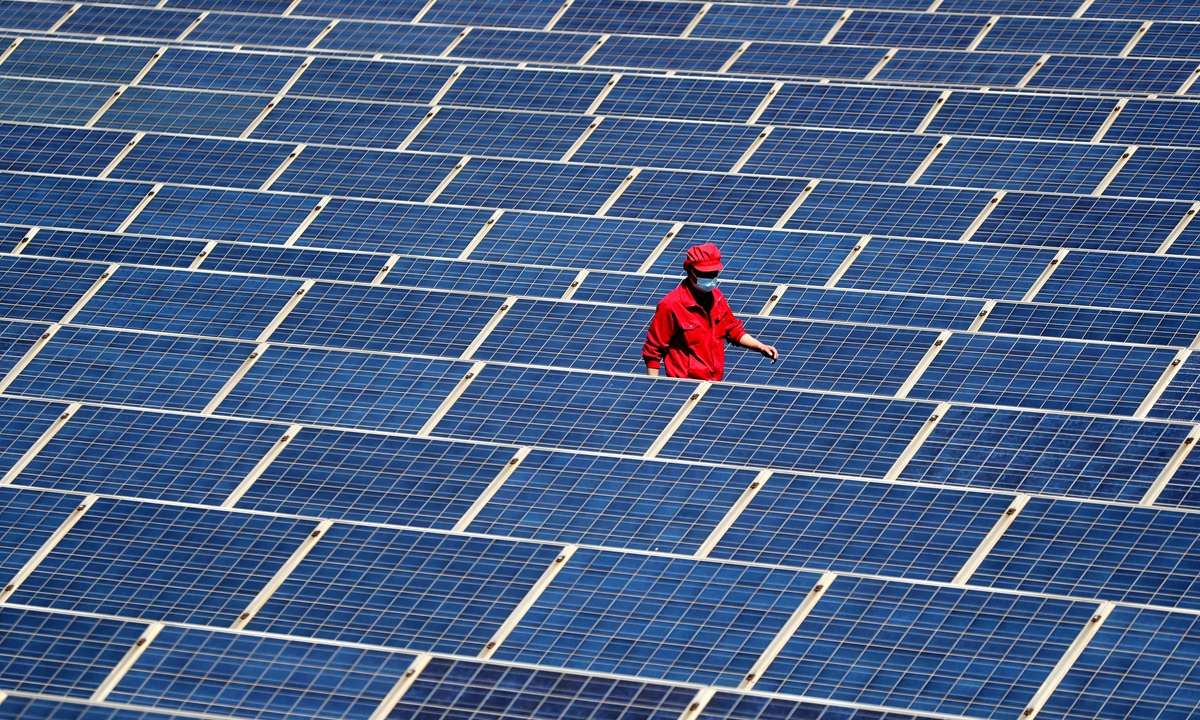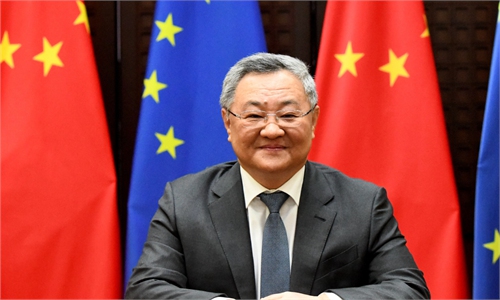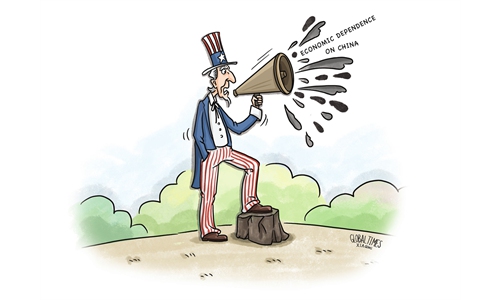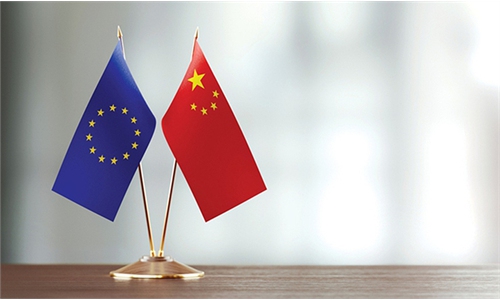
File photo: cnsphoto
While the introduction of industrial subsidies in the US and European countries has significantly accelerated the global competition on green sectors, the EU's need to speed up its energy transition and China's huge advantages in related industries may still represent great potential for China-EU new-energy cooperation, which is also a key area for testing the EU's policy stance toward China.China's photovoltaic module exports totaled 50.9 gigawatts (GW) in the first quarter of 2023, up 37 percent year-on-year, according to the latest data compiled by energy industry consultancy InfoLink Consulting. The European market contributed the most to the gain in exports. Europe imported 29.5 GW of photovoltaic modules from China in the first quarter of this year, up 56 percent from the fourth quarter of 2022 and up 77 percent from the first quarter of 2022.
To a certain extent, the surge in Chinese exports of solar products to Europe is a microcosm of the huge potential in new-energy cooperation between China and the EU. Under the impact of the Russia-Ukraine conflict, energy prices in Europe soaring, and the EU faces the urgent need to achieve its goal of transitioning to clean energy resources as soon as possible. Given China's position in the solar and wind power parts and equipment industrial chains, it is undeniable that cooperation with China can play a big role in helping with the transition.
But it is important to note that such cooperation also faces challenges from so-called green protectionism. Take the solar panel sector as an example. Since the solar panel industry is the upstream manufacturing end of the solar power application, US and European countries now want to foster their own domestic solar manufacturing industries instead of being mere buyers of Chinese products.
Just last week, the US Senate voted to reinstate tariffs which go as high as 254 percent on solar panels from Southeast Asia, as a Commerce Department investigation alleged that Chinese solar manufacturers are circumventing US anti-dumping and countervailing duties by assembling equipment in Southeast Asia, according to a Bloomberg report.
Last year, US President Joe Biden signed into law the Inflation Reduction Act, which aims to channel future investment in renewable-energy development with large-scale industrial subsidies, supporting domestic green industrial production and boosting local green manufacturing.
It is under the US influence that in mid-March this year, the EU also introduced similar measures, such as the Net-Zero Industry Act, to protect their own clean-energy industries, with a target of raising local production of Europe's clean technologies to at least 40 percent by 2030. In this sense, it will be an inevitable trend for developed countries to develop their own solar or wind power sectors, pointing to fiercer competition in the global green sector in the future.
Chinese solar manufacturers are likely to face more challenges and competition in the future, but there is still no need to be pessimistic about China-EU photovoltaic cooperation. This is because the EU also faces the huge pressure of improving the region's energy security. In the wake of the Russia-Ukraine conflict, the EU has dealt with severe energy shortages and energy inflation, which then causes the region's industrial loss. So to get its economy out of the current doldrums, the EU must speed up its clean-energy transition by developing the photovoltaic sector. Thus, the importance of closer cooperation with China has been further highlighted, as shown in recent China visits paid by EU leaders.
The fact that China is a global leader in new energy sector, accounting for about 80 percent of solar panel manufacturing, determines the EU cannot afford to give up cooperation with China. Whether the EU wants to develop wind power or solar power, China's advantages in terms of costs, production scale and technologies mean that it is a perfect and indispensable partner for the EU. Only through close cooperation between the two sides can they reduce reliance on traditional energy sources and achieve climate change targets.



